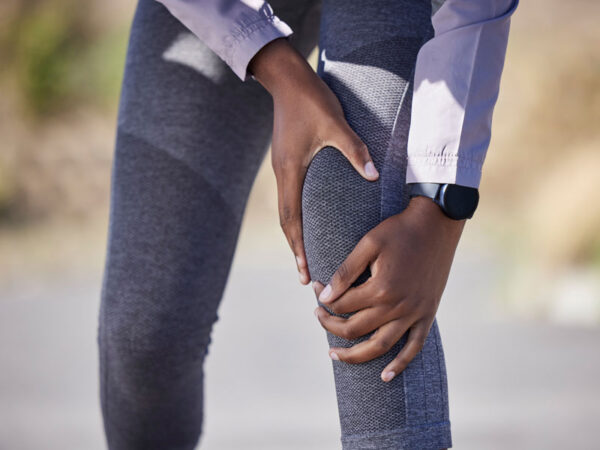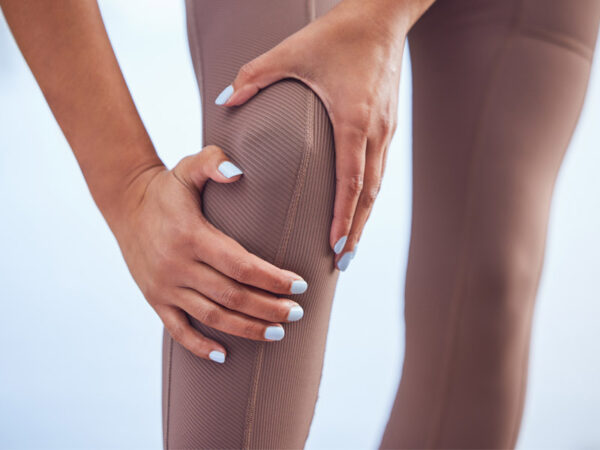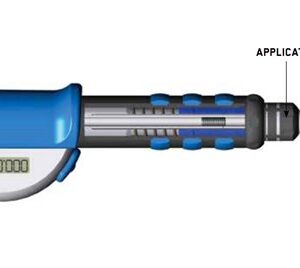Posterolateral Corner Injury
Posterolateral corner injuries affect the outer knee and makes stability nearly impossible. You can feel sharp pain when walking and notice swelling hours after damaging the structures between your thigh and lower leg.
Posterolateral corner injury can lead to knee instability often with Anterior Cruciate Ligament (ACL) or Posterior Cruciate Ligament (PCL) injuries and requires careful evaluation and sometimes surgery. If the damage affects only part of the structures and your knee stays fairly stable, you might cope without surgery. Physiotherapy and lifestyle adjustments can be effective options.
Complete tears can cause the knee to collapse sideways during normal movements. Surgery becomes the only realistic option when walking feels unsafe despite weeks of strengthening exercises and protective bracing.
Three connected structures form your posterolateral corner and work together to stabilise your knee. These ligaments prevent outward movement while controlling rotation when running, climbing stairs or making sudden turns.

What is the posterolateral corner?
The posterolateral corner of the knee is a complex area made up of multiple ligaments, tendons and soft tissue structures that help with stability, especially against varus forces, external rotation and posterior translation of the tibia.
The main structures of the PLC are:
Primary Stabilisers:
- Fibular (Lateral) Collateral Ligament (FCL) – resists varus stress.
- Popliteus Tendon – dynamic stabilizer and resists external tibial rotation.
- Popliteofibular Ligament (PFL) – connects the popliteus tendon to the fibula and resists posterior tibial translation and external rotation.
Secondary Stabilisers:
- Lateral Capsule – additional support to the lateral knee.
- Arcuate Ligament – Y-shaped ligament that reinforces the posterior capsule.
- Fabellofibular Ligament – from fabella (when present) to the fibula.
- Posterolateral Joint Capsule – prevents excessive hyperextension.
- Lateral Gastrocnemius Tendon – additional dynamic support.
- Iliotibial Band (ITB) Posterior Fibers – lateral knee stability.
- Biceps Femoris Tendon – external rotation and lateral stability.
Symptoms of posterolateral corner injury
Pain strikes the outer knee area and increases when bearing weight on your injured leg. Standing becomes challenging as pressure through the damaged structures can send shooting pain into your joint.
Walking creates instability as your knee might buckle with each step forward. Most people develop a compensatory limp to avoid fully loading the painful outer knee during daily activities.
Swelling develops quickly, making the knee look larger than the uninjured side. The swollen area can feel warm and tender when touched, and maximum discomfort occurs over the damaged structures.
Stiffness limits how far you can bend or straighten your leg compared to normal movement range. Morning pain feels particularly intense after your knee stays still through the night while inflammation settles into the joint.
Similar injuries
Lateral meniscus tears
Lateral meniscus tears share the outer knee location but usually create catching sensations during specific movements. The pain concentrates along your joint line rather than throughout the outer knee structure.
Biceps femoris tendon injuries
Biceps femoris tendon injuries affect the same area, but pain worsens during hamstring contraction rather than knee rotation. You feel discomfort higher on the outer thigh extending down toward the knee.
ITB syndrome
ITB syndrome produces outer knee pain primarily during repetitive activities like running. Symptoms typically build gradually without the sudden onset characteristic of posterolateral corner injuries. These symptoms tend to be felt more on the outside of the knee, whereas posterolateral corner injuries tend to be felt more over the back of the knee.
MCL tears
MCL tears cause pain on the inner knee rather than the outer side affected by posterolateral damage. Due to similar swelling and instability when walking, you might confuse these injuries.
Causes of posterolateral corner injuries
Contact sports often damage the posterolateral corner through direct hits or awkward falls during play. Rugby tackles from the side while your foot remains planted create conditions for tearing these structures.
Car accidents can force your knee into unnatural positions when impact pushes against your leg during a collision. The sudden external rotation stretches your posterolateral structures beyond their breaking point.
Falls with your knee extended put massive pressure on the outer structures when landing awkwardly. Slipping on ice or missing a step creates potentially dangerous positions where your body weight leverages against vulnerable ligaments.
Rapid direction changes during basketball, tennis or skiing overwhelm your knee stabilisers within seconds. Pivoting while your foot stays planted tears the posterolateral corner when rotational forces exceed tissue strength.
What to do if you suspect a posterolateral corner injury
- Stop your activity immediately and avoid putting more weight on your injured leg
- Apply ice packs to your outer knee for 15 minutes hourly to limit swelling and pain
- Wrap your knee with a compression bandage, keeping it firm but not tight enough to restrict circulation
- Elevate your leg above heart level to reduce fluid buildup when sitting or lying down
- Take over-the-counter pain and anti-inflammatory medication if needed
- Use crutches to keep weight off your injured knee when moving around
- Arrange an urgent GP appointment or visit A&E if your knee feels extremely unstable
- Avoid stretching, massaging, or applying heat to your knee until diagnosed
- Keep your knee slightly bent comfortably rather than entirely straight or bent
Diagnosis
Physical examination reveals excessive movement in specific directions compared to your healthy knee. Your doctor / physiotherapist checks for excessive external rotation and tests whether your lower leg shifts too far outward.
MRI scans show detailed images of each damaged structure and help guide treatment decisions for recovery. The severity and location of tears determine whether surgery might benefit your specific injury pattern.
Assessment includes testing other knee ligaments since isolated posterolateral injuries remain relatively uncommon. Many patients have combined injuries affecting multiple structures, which complicates treatment planning.
Physiotherapy treatment
Initial management focuses on controlling pain and swelling through ice application for fifteen minutes hourly. Elevation keeps fluid from pooling in your knee joint, while compression bandages provide support during early healing.
Protected weight-bearing using crutches prevents further damage while torn structures begin healing. Your physiotherapist advises how much weight is safe based on injury severity and stability.
Manual therapy mobilises stiff areas without stressing healing tissues during early rehabilitation sessions. Gentle hands-on techniques restore normal movement patterns while protecting vulnerable structures from excessive forces.
Strengthening begins with isometric exercises, in which muscles contract without moving the painful knee joint. These gentle start to build foundation strength before progressing to more challenging movement patterns.
Balance work improves position sense and control during standing and walking activities with your injured leg. Single-leg exercises gradually incorporate movement while maintaining proper knee alignment throughout rehabilitation.
Recovery timeline
Initial healing takes approximately six weeks before damaged structures form strong connecting tissue between torn ends. Protected activity during this phase creates optimal conditions for biological healing processes.
Strength returns gradually between six and twelve weeks with consistent exercise and appropriate loading. Your physiotherapist increases exercise difficulty progressively as your knee demonstrates improved stability during testing.
Return to sport typically takes four to six months, depending on injury severity and competitive demands. Full recovery requires patience and dedicated rehabilitation to restore confidence in knee stability.
Surgery becomes necessary for complete tears or failed conservative management despite appropriate rehabilitation. Reconstruction adds several months to recovery but offers better long-term stability for severely damaged structures.
Summing up
Posterolateral corner damage leaves your knee unstable and undermines everyday movements. You need accurate diagnosis and steadily increasing therapy to rebuild reliable function in your injured leg over time.
Professional assessment determines the most appropriate treatment path for your specific situation. We are always available to help. For more information, get in touch today.


